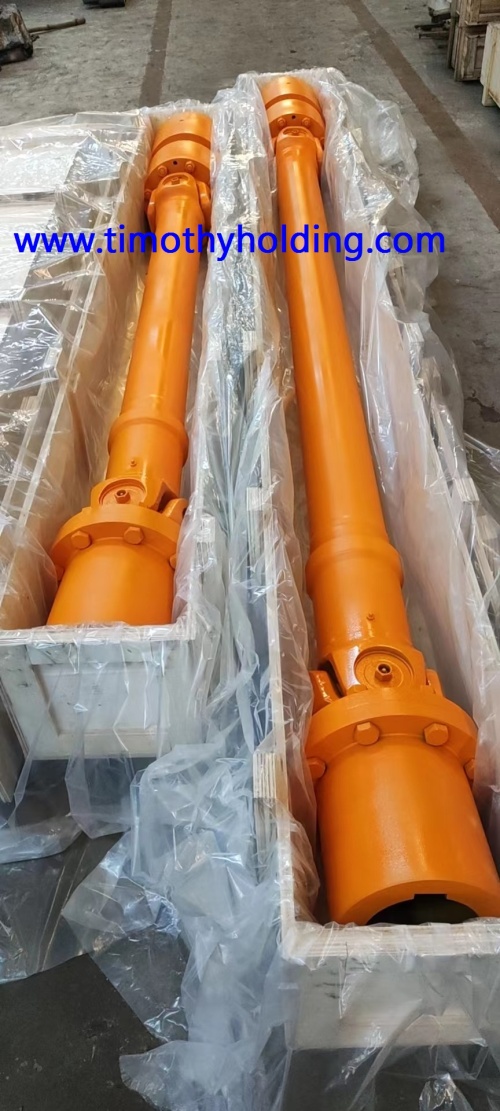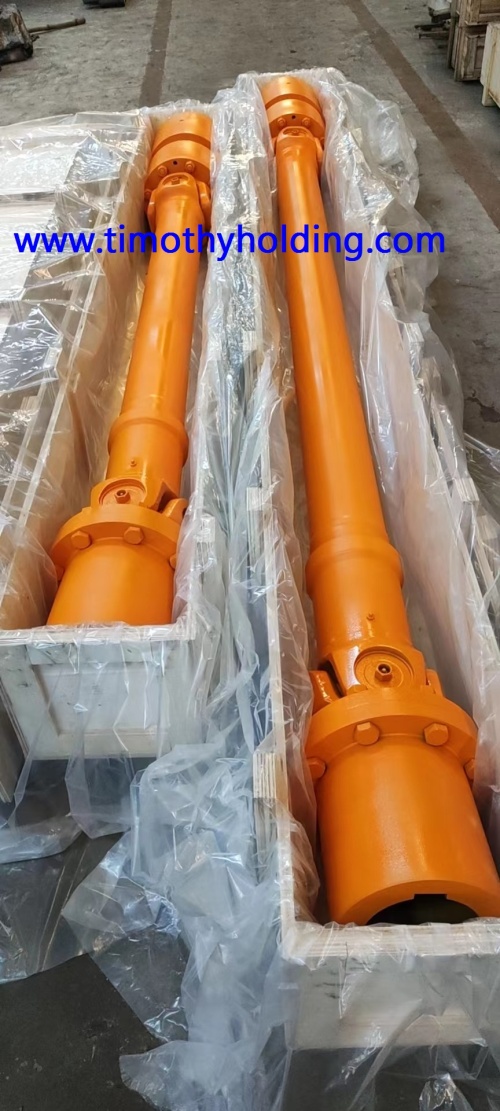
Most Popular
 Cardan drive shaft
Cardan drive shaft
Cardan drive shaft ...
 Cardan Shafts For Continuous Casting Mill
Cardan Shafts For Continuous Casting Mill
Cardan Shafts For Continuous Casting and Rolling MillMaterial:35CrMo and 20CrMnTiSize:SWC225/250/285/315/350/390/440/550/620/780SWP ...
 Cardan joint shaft
Cardan joint shaft
Cardan joint shaft ...


 Industrial cardan shafts , https://www.timothyholding.com
Industrial cardan shafts , https://www.timothyholding.comcardan shaft for paper mills


 cardan shaft for paper mills , https://www.timothyholding.com
cardan shaft for paper mills , https://www.timothyholding.comCardan Shaft For Metallurgical Machinery


 Cardan Shaft For Metallurgical Machinery , http://www.timothyholding.com
Cardan Shaft For Metallurgical Machinery , http://www.timothyholding.comUniversal Joint Shafs For Steel Rolling Mill


 Universal Joint Shafs For Steel Rolling Mill ,https://www.timothyholding.com
Universal Joint Shafs For Steel Rolling Mill ,https://www.timothyholding.comCardan Shafts For Steel Plant ,Rolling Mills


 Cardan Shafts For Steel Plant ,Rolling Mills ,https://www.timothyholding.com
Cardan Shafts For Steel Plant ,Rolling Mills ,https://www.timothyholding.comUniversal joint cross (Universal joint cross.pdf)
Universal joint shaft SWP Series (Universal joint shaft SWP Series.pdf)
Universal joint (Universal joint .pdf)
Cardan shaft SWP Series (Cardan shaft SWP Series.pdf)



Future Prospects of the Steel Industry

Future Prospects of the Steel Industry
Web::www.timothyholding.com/Future-Prospects-of-the-Steel-Industry.html
1. Sustainable Production Methods
The future of the steel industry is closely tied to its ability to adopt sustainable production methods. The transition to low-carbon and zero-carbon steel production is imperative to meet global climate goals. Hydrogen-based steelmaking, which replaces carbon with hydrogen in the reduction process, holds significant promise. If commercialized at scale, it could drastically reduce the industry's carbon footprint.
Moreover, recycling and circular economy practices are expected to play a larger role. Increasing the use of scrap steel in production can reduce the need for virgin raw materials and decrease overall energy consumption. Enhanced recycling techniques and the development of new recycling technologies will be crucial for achieving sustainability targets.
2. Advanced Materials and Innovation
Innovation in materials science will continue to drive the steel industry forward. Researchers are exploring new steel alloys with enhanced properties, such as increased corrosion resistance, higher strength, and improved formability. These advanced materials will find applications in various industries, from construction to aerospace, where performance and durability are critical.
Furthermore, nanotechnology is expected to revolutionize steel production. Nano-engineered steels can offer superior strength, toughness, and wear resistance, opening up new possibilities for their use in extreme environments and high-performance applications.
3. Digital Transformation
Digital transformation will remain a key trend in the steel industry. The adoption of Industry 4.0 technologies, such as AI, IoT, and big data analytics, will continue to optimize production processes and supply chain management. Predictive analytics will enable manufacturers to anticipate market demand and adjust production accordingly, reducing excess inventory and minimizing waste.
Additionally, blockchain technology has the potential to enhance transparency and traceability in the steel supply chain. By providing a secure and immutable record of transactions, blockchain can help prevent fraud, ensure product quality, and streamline logistics.
4. Urbanization and Infrastructure Development
The ongoing urbanization and infrastructure development, particularly in emerging markets, will be a significant driver of steel demand. As populations grow and cities expand, the need for residential, commercial, and industrial infrastructure will increase. Steel will remain a fundamental material for constructing buildings, bridges, railways, and other critical infrastructure.
Governments around the world are also investing in large-scale infrastructure projects to stimulate economic growth and improve living standards. These projects, including smart cities and sustainable transportation systems, will further boost the demand for steel.
350-cardan shaft.jpg
5. Circular Economy and Resource Efficiency
The steel industry is expected to embrace the principles of the circular economy more fully. This involves designing products for longevity, reuse, and recyclability. By minimizing waste and maximizing resource efficiency, the industry can reduce its environmental impact and create new business opportunities.
Product-as-a-service models, where steel products are leased rather than sold, are gaining traction. This approach encourages manufacturers to design durable products that can be easily maintained and recycled, fostering a more sustainable and resource-efficient industry.

Conclusion:
The steel industry is at a pivotal moment, shaped by technological advancements, sustainability initiatives, and evolving market demands. As it navigates these changes, the industry's ability to innovate and adapt will be crucial for its future success. By embracing sustainable practices, investing in advanced materials, and leveraging digital technologies, the steel industry can continue to thrive and play a vital role in the global economy.
The future prospects of the steel industry are promising, with significant opportunities for growth and development. As the world moves towards a more sustainable and technologically advanced future, the steel industry will remain a cornerstone of progress, driving innovation and supporting the infrastructure and industries that underpin modern society.
Contact Name:August
Mobile Phone:+86-13758897904
E :[email protected]
Web:www.timothyholding.com
Address:55# Jinshi Road ,Lecheng Industrial Park,Yueqing City,Zhejiang provice,China